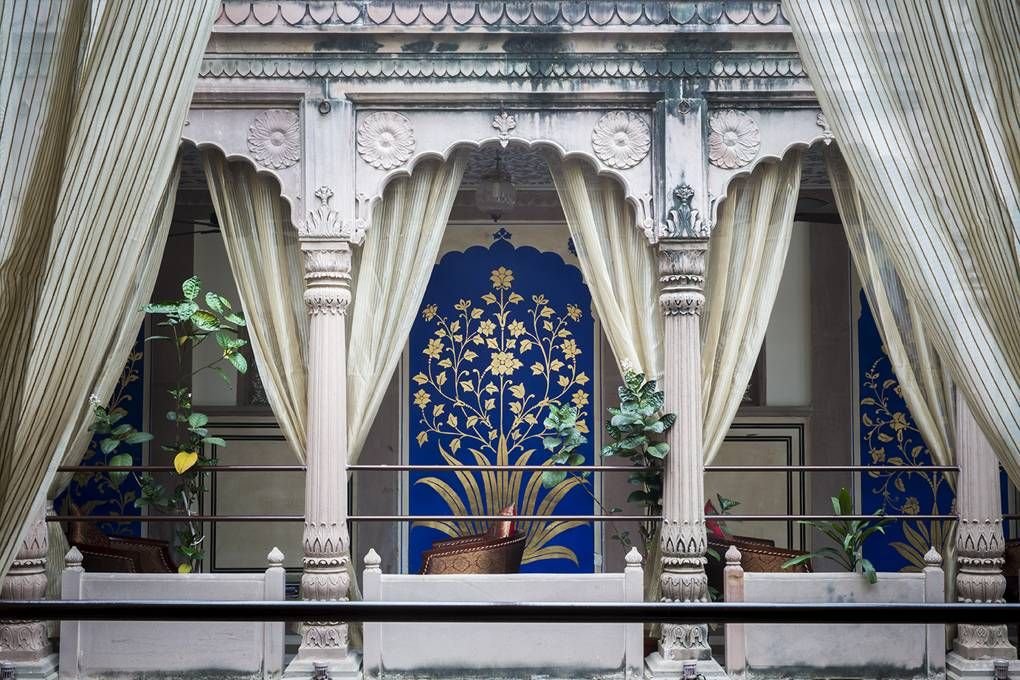Portuguese colonial architecture has left an indelible mark on the landscape of several regions of India, including South Bombay, Goa, Daman, and Diu. The Portuguese were one of the first European powers to establish a presence in India, arriving on the western coast in the early 16th century. Over the next several centuries, the Portuguese exerted considerable influence over the region, including in the realm of architecture. Portuguese design principles, such as the use of white plaster, intricate tile work, and open courtyards, continue to shape the aesthetic of these regions to this day.

One of the most iconic examples of Portuguese colonial architecture in India is found in South Bombay. The region, which includes the neighbourhoods of Colaba, Fort, and Churchgate, is home to numerous buildings that showcase Portuguese design principles. The influence of Portuguese colonial architecture in India is not only limited to historical structures but also extends to contemporary homes. In the coastal state of Goa, where Portuguese rule lasted for centuries, the legacy of this architectural style can still be seen today. Blending traditional Goan elements with Portuguese design principles, these homes evoke a sense of charm and timelessness. For example, conventional Goan villas retain the essence of Goan architecture while incorporating Portuguese design elements, the exteriors feature colourful tiles and fences while the interiors are adorned with intricate wooden carvings and antique furniture.

One of the most famous examples of Portuguese colonial architecture in Goa is the Basilica of Bom Jesus, a Baroque church built in the early 17th century. The church is constructed from laterite stone and features white plaster and marvellous tile work, as well as numerous statues and frescoes. Portuguese colonial architecture in Goa combines various design elements that reflect the historical interaction between Indian and Portuguese. As a response to the region’s climate, the use of white plaster helps to reflect sunlight, keeping interiors cooler. This distinctive feature is often complemented by intricate tile work, featuring delicate patterns and designs.

The Portuguese also left their mark on the architecture of Daman and Diu, two small territories located on the western coast of India. The region was under Portuguese rule from the 16th century until 1961, and the influence of Portuguese design principles can be seen in numerous buildings throughout the area. One of the most famous examples is the fort of Moti Daman, this historic fort features thick stone walls, bastions, and imposing gateways. The fort also houses several Portuguese-era buildings, including the Governor’s Palace, which showcases Portuguese architectural elements such as ornamental facades and arched windows.
Inspired by traditional Indian architecture, open courtyards are a central feature in many Goan homes. These courtyards provide a gathering space, allow natural light to enter, and enhance ventilation. They can be transformed into a versatile and inviting space by adding comfortable seating, plants, and decorative elements. The courtyard can become a serene oasis for relaxation and socializing and can serve as an outdoor living room, a dining area for al fresco meals, or a place for creative pursuits such as gardening or painting.

White plaster was a practical choice, as the hot and humid climate of India can be harsh on building materials. White plaster helped to reflect the sun’s rays and keep the interiors of buildings cooler. It also gave buildings a distinct appearance that set them apart from traditional Indian architecture. This can be seen in numerous buildings throughout South Bombay, Goa, Daman, and Diu, where tiles are used to decorate floors, walls, and ceilings. The tiles often feature delicate patterns and designs and are another example of the fusion of Indian and Portuguese design principles.

While preserving the essence of Portuguese colonial architecture, modern homes in Goa are also embracing contemporary elements. This fusion results in a captivating blend of tradition and modernity, offering comfortable and aesthetically pleasing living spaces. Examples of such homes can be found throughout Goa, including popular areas like Panaji, Margao, and Mapusa.
The enduring influence of Portuguese colonial architecture is not limited to historical structures alone. Goa’s architectural landscape continues to evolve, with new homes being built in the Portuguese style. The Leela Goa, a luxury resort built in the 1990s, stands as a testament to this evolution, showcasing white plaster exteriors, tile work, and open courtyards reminiscent of the region’s colonial past.

The enchanting homes inspired by Portuguese colonial architecture in Goa offer a delightful glimpse into the region’s rich cultural heritage. By incorporating elements of Portuguese design principles into their construction, these homes create a unique ambience that blends tradition with contemporary aesthetics. Whether exploring the narrow streets of Goa or staying in one of the charming Portuguese-inspired villas, visitors and residents alike can immerse themselves in the captivating world of Goan architecture, where history and modernity gracefully coexist.
The fusion of Indian and Portuguese design elements has created a unique aesthetic that continues to shape the landscape of these regions today. Whether visiting the Basilica of Bom Jesus in Goa or strolling through the streets of South Bombay, visitors to these regions can experience the rich legacy of Portuguese colonial architecture in India.


